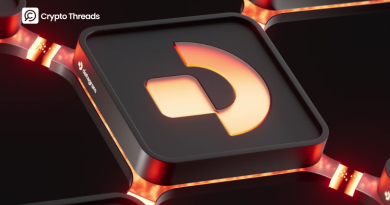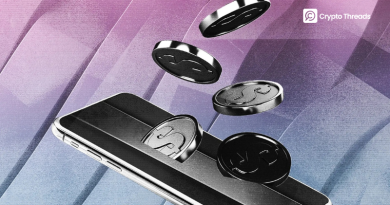A Blockchain Comparison between Solana and Ethereum
A strong rival to Ethereum, Solana directly competes with the second-largest layer-1 blockchain network on a number of fronts. Despite having the same goal of establishing an ecosystem in which developers can create, develop, and expand, each blockchain has special features and advantages over the others. This essay offers a thorough analysis of Solana and Ethereum, stressing their salient characteristics and main distinctions.
Solana Blockchain Overview
Solana, launched by Solana Labs in 2020, operates as a layer-one blockchain with a Proof-of-Stake (PoS) consensus mechanism. Its signature feature, Proof-of-History (PoH), timestamps transactions to improve scalability. This enables validators to only process certain bits of a transaction, lessening their computational load. Solana’s main goal is to support smart contract applications with transaction costs lower than Ethereum. Tradex gives users access itself to the blockchain for NFT and DeFi trading, with plans to eventually allow for securities trading. SOL is the token that fuels the network, is used for gas fees and staking by validators to secure the operators, and punishes in case of malicious behavior.
Ethereum Blockchain Overview
The Ethereum network is a public, open-source blockchain-based distributed computing platform that allows developers to develop and implement smart contracts and decentralized applications (dApps) without the use of intermediaries. Its native token, Ether (ETH), is the second-largest cryptocurrency in the world by a market cap of around $476.5 billion. There is no upper limit on ETH—unlike Solana—and currently more than 120.45 million ETH circulate.

Pros and Cons of Solana and Ethereum
Both Ethereum and Solana intend to give designers instruments and administrations to streamline building dApps. But they have different architectures and approaches that give developers different choices based on their priorities.
Solana and Ethereum Consensus Mechanism
Ethereum (Post-Merge): Proof-of-Stake (PoS) Mechanism
The Merge upgrade in 2022 transitioned Ethereum from Proof-of-Work (PoW) to Proof-of-Stake (PoS). In contrast to PoW, in which miners must expend vast amounts of energy to mine blocks, PoS requires validators to stake ETH in smart contracts as collateral before they can propose and attest to blocks. Blocks are proposed by randomly selected validators, then verified by others. These penalties are extremely severe, including “slashing, where you lose staked ETH. In exchange, validators receive rewards from newly created ETH and transaction fees. Validators are required to stake at least 32 ETH to participate, a mechanism intended to promote broad participation.
Solana: Proof-of-History (PoH) Integration
Since the launch, Solana has introduced Proof-of-History (PoH) in addition to its PoS model. PoH stamps cryptographic timestamps on transactions that allow validators to process them out of order. This system allows for an improvement in the transaction speeds, making 710,000 transactions per second (TPS) possible (theoretical) and around 3,000–4,000 TPS.
Solana and Ethereum Transaction Speed and Throughput
The Ethereum base layer processes transactions between 15 and 30 TPS but layer 2 scalability solutions like rollups bring TPS to thousands by executing off-chain transactions before sending the information to the main network. Due to its PoH mechanism, Solana achieves far greater throughput but confronts issues such as network outages at peak load times. To improve scalability, Ethereum has continued its work on future upgrades such as sharding, which would break the network into smaller shards that could all process transactions on their own.
Solana and Ethereum Network Fees
Ethereum gas fees remain some of the highest in the blockchain space, frequently exceeding $1 per transaction, though layer 2 solutions seek to alleviate this. The cost of transactions being as low as 0.0001 SOL facilitates developers and users engaging in high-frequency transactions to use Solana due to its low-cost architecture. Recently, Solana outgenerated Ethereum in generation fees, not because the transaction costs were higher but because the network activity was up significantly.
Solana and Ethereum Decentralization
Ethereum is regarded as more decentralized, maintaining more than 800,000 active validators. A 32 ETH staking requirement serves to incentivise mass participation, contributing towards its security and resilience. Solana, on the other hand, has about 2,000 active validators and high hardware requirements, which makes operating a validating node costlier. However, this has led to concerns about centralization while Solana moves to increase its validator network.
Solana and Ethereum Ecosystems

Solana and Ethereum Ecosystems (Source: Solanians)
DApp Ecosystems
Ethereum leads with the largest decentralized application ecosystem, supported by nearly 9,000 active monthly developers contributing to open-source projects and tens of thousands more working on proprietary applications. Prominent Ethereum-based protocols include Uniswap, Aave, Compound, and OpenSea.
Solana hosts over 350 active dApps and 1.28 million unique active wallets. Its ecosystem emphasizes high throughput and low costs, attracting developers to projects like Raydium, Orca, and Metaplex. Partnerships, such as its collaboration with Helium for decentralized wireless infrastructure, highlight Solana’s potential for mainstream adoption.
Developer Support
Ethereum offers a wealth of developer resources, including grants, hackathons, and educational tools, and fosters innovation through initiatives like ETHGlobal. Solana is rapidly building developer support through programs like mtnDAO and hackathons to create scalable dApps. Support for programming languages like Rust and TypeScript simplifies the development process. Solana recently surpassed Ethereum in onboarding new developers, reflecting its growing appeal.
Solana vs. Ethereum Interoperability
Ethereum leads the way in cross-chain integration, leveraging token bridges and composable components like Polygon Bridge, Optimism, and zkSync to facilitate asset transfers and interoperability. Solana relies on the Wormhole Bridge and Cross-Chain Messaging Protocol (CCMP) for interoperability, allowing connections to blockchains such as Ethereum, BNB Smart Chain, and Aptos.
This comprehensive comparison highlights the strengths and challenges of both Solana and Ethereum, providing developers and users with insights into choosing the platform that best suits their needs.



